History of the automobile Cars
From Wikipedia, the free encyclopedia
The history of the automobile begins as early as 1769, with the creation ofsteam engined automobiles capable of human transport.[1] In 1806, the first cars powered by an internal combustion engine running on fuel gas appeared, which led to the introduction in 1885 of the ubiquitous modern gasoline- or petrol-fueled internal combustion engine. Cars powered by electric powerbriefly appeared at the turn of the 20th century, but largely disappeared from use until the turn of the 21st century. The early history of the automobile can be divided into a number of eras, based on the prevalent means of propulsion. Later periods were defined by trends in exterior styling, and size and utility preferences.
Contents[hide] |
Eras of invention[edit]
The First conception of a mechanism used for transportation that could carry people, and was not pulled by any organism, but controlled by a wheel by one person riding in the mechanism and ran on petroleum or another energy substance was first thought of in the late 1400s by Leonardo Da Vinci in present day Italy, He called them Carriages without horses. He drew plans for this mechanismbut focused more on his art, because of this, most scientists think that the original idea for the car was not taken from Da Vinci's Drawings
Early automobiles[edit]
Steam-powered wheeled vehicles, precursors to later automobiles[edit]
Main article: History of steam road vehicles
17th century - 18th century[edit]
Ferdinand Verbiest, a member of a Jesuit mission in China, built the first steam-powered vehicle around 1672 as a toy for the Chinese Emperor. It was of small enough scale that it could not carry a driver but it was, quite possibly, the first working steam-powered vehicle ('auto-mobile').[2][3]
Steam-powered self-propelled vehicles large enough to transport people and cargo were first devised in the late 18th century. Nicolas-Joseph Cugnot demonstrated his fardier à vapeur("steam dray"), an experimental steam-driven artillery tractor, in 1770 and 1771. As Cugnot's design proved to be impractical, his invention was not developed in his native France. The centre of innovation shifted to Great Britain. By 1784, William Murdoch had built a working model of a steam carriage in Redruth, and in 1801 Richard Trevithick was running a full-sized vehicle on the road in Camborne.[4] Such vehicles were in vogue for a time, and over the next decades such innovations as hand brakes, multi-speed transmissions, and better steeringdeveloped. Some were commercially successful in providing mass transit, until a backlash against these large speedy vehicles resulted in the passage of the Locomotive Act (1865), which required self-propelled vehicles on public roads in the United Kingdom to be preceded by a man on foot waving a red flag and blowing a horn. This effectively killed road auto development in the UK for most of the rest of the 19th century; inventors and engineers shifted their efforts to improvements in railway locomotives. (The law was not repealed until 1896, although the need for the red flag was removed in 1878.)
The first automobile patent in the United States was granted to Oliver Evans in 1789.
19th century[edit]
Among other efforts, in 1815, a professor at Prague Polytechnic, Josef Bozek, built an oil-fired steam car.[5]:p.27 Walter Hancock, builder and operator of London steam buses, in 1838 built a four-seat steam phaeton.[5]:p27
In 1867, Canadian jeweller Henry Seth Taylor demonstrated his 4-wheeled "steam buggy" at the Stanstead Fair in Stanstead, Quebec, and again the following year.[6] The basis of the buggy, which he began building in 1865, was a high-wheeled carriage with bracing to support a two-cylinder steam engine mounted on the floor.[7]
What some people define as the first "real" automobile was produced by French Amédée Bollée in 1873, who built self-propelled steam road vehicles to transport groups of passengers.
The American George B. Selden filed for a patent on May 8, 1879. His application included not only the engine but its use in a 4-wheeled car. Selden filed a series of amendments to his application which stretched out the legal process, resulting in a delay of 16 years before the US 549160[8] was granted on November 5, 1895.
The four-stroke petrol (gasoline) internal combustion engine that constitutes the most prevalent form of modern automotive propulsion is a creation of Nikolaus Otto. The similar four-stroke diesel engine was invented by Rudolf Diesel. The hydrogen fuel cell, one of the technologies hailed as a replacement for gasoline as an energy source for cars, was discovered in principle by Christian Friedrich Schönbein in 1838.[citation needed] The battery electric car owes its beginnings to Ányos Jedlik, one of the inventors of the electric motor, and Gaston Planté, who invented the lead-acid battery in 1859.[citation needed]
The first carriage-sized automobile suitable for use on existing wagon roads in the United States was a steam powered vehicle invented in 1871, by Dr. J.W. Carhart, a minister of the Methodist Episcopal Church, in Racine, Wisconsin. It induced the State of Wisconsin in 1875, to offer a $10,000 award to the first to produce a practical substitute for the use of horses and other animals. They stipulated that the vehicle would have to maintain an average speed of more than five miles per hour over a 200 mile course. The offer led to the first city to city automobile race in the United States, starting on July 16, 1878, in Green Bay, Wisconsin, and ending in Madison, via Appleton, Oshkosh, Waupun, Watertown, Fort Atkinson, and Janesville. While seven vehicles were registered, only two started to compete: the entries from Green Bay and Oshkosh. The vehicle from Green Bay was faster, but broke down before completing the race. The Oshkosh finished the 201 mile course in 33 hours and 27 minutes, and posted an average speed of six miles per hour. In 1879, the legislature awarded half the prize.[10]
Steam-powered automobiles continued development all the way into the early 20th century, but the dissemination of petrol engines as the motive power of choice in the late 19th century marked the end of steam automobiles except as curiosities. Whether they will ever be reborn in later technological eras remains to be seen. The 1950s saw interest in steam-turbine cars powered by small nuclear reactors (this was also true of aircraft), but the dangers inherent in nuclear fission technology soon killed these ideas. The need for global changes in energy sources and consumption to bring about sustainability and energy independence has led 21st century engineers to think once more about possibilities for steam use, if powered by modern energy sources controlled with computerized controls, such as advanced electric batteries, fuel cells, photovoltaics, biofuels, or others.
Electric automobiles[edit]
See also: History of the electric vehicle
In 1828, Ányos Jedlik, a Hungarian who invented an early type of electric motor, created a tiny model car powered by his new motor.[11]In 1834, Vermont blacksmith Thomas Davenport, the inventor of the first American DC electrical motor, installed his motor in a small model car, which he operated on a short circular electrified track.[12] In 1835, Professor Sibrandus Stratingh of Groningen, theNetherlands and his assistant Christopher Becker created a small-scale electrical car, powered by non-rechargeable primary cells.[13]In 1838, Scotsman Robert Davidson built an electric locomotive that attained a speed of 4 miles per hour (6 km/h). In England, a patentwas granted in 1840 for the use of rail tracks as conductors of electric current, and similar American patents were issued to Lilley and Colten in 1847. Between 1832 and 1839 (the exact year is uncertain), Robert Anderson of Scotland invented the first crude electric carriage, powered by non-rechargeable primary cells.
Internal combustion engines[edit]
Early attempts at making and using internal combustion engines were hampered by the lack of suitable fuels, particularly liquids, therefore the earliest engines used gas mixtures.
Early experimenters used gases. In 1806, Swiss engineer François Isaac de Rivaz who builtan engine powered by internal combustion of a hydrogen and oxygen mixture. In 1826, Englishman Samuel Brown who tested his hydrogen-fuelled internal combustion engine by using it to propel a vehicle up Shooter's Hill in south-east London. Belgian-born Etienne Lenoir's Hippomobile with a hydrogen-gas-fuelled one-cylinder internal combustion engine made a test drive from Paris to Joinville-le-Pont in 1860, covering some nine kilometres in about three hours.[14] A later version was propelled by coal gas. A Delamare-Debouttevillevehicle was patented and trialled in 1884.
About 1870, in Vienna, Austria (then the Austro-Hungarian Empire), inventor Siegfried Marcus put a liquid-fuelled internal combustion engine on a simple handcart which made him the first man to propel a vehicle by means of gasoline. Today, this car is known as "the first Marcus car". In 1883, Marcus secured a German patent for a low-voltage ignition system of the magneto type; this was his only automotive patent. This design was used for all further engines, and the four-seat "second Marcus car" of 1888/89. This ignition, in conjunction with the "rotating-brush carburetor", made the second car's design very innovative.
It is generally acknowledged that the first really practical automobiles with petrol/gasoline-powered internal combustion engines were completed almost simultaneously by several German inventors working independently: Karl Benz built his first automobile in 1885 inMannheim. Benz was granted a patent for his automobile on 29 January 1886, and began the first production of automobiles in 1888, after Bertha Benz, his wife, had proved - with the first long-distance trip in August 1888, from Mannheim to Pforzheim and back - that the horseless coach was absolutely suitable for daily use. Since 2008 a Bertha Benz Memorial Route commemorates this event.
Soon after, Gottlieb Daimler and Wilhelm Maybach in Stuttgart in 1889 designed a vehicle from scratch to be an automobile, rather than a horse-drawn carriage fitted with an engine. They also are usually credited with invention of the first motorcycle in 1886, but Italy'sEnrico Bernardi of the University of Padua, in 1882, patented a 0.024 horsepower (17.9 W) 122 cc (7.4 cu in) one-cylinder petrol motor, fitting it into his son's tricycle, making it at least a candidate for the first automobile, and first motorcycle;.[5]:p.26 Bernardi enlarged the tricycle in 1892 to carry two adults.[5]:p.26
One of the first four-wheeled petrol-driven automobiles in Britain was built in Birmingham in 1895 by Frederick William Lanchester, who also patented the disc brake; and the first electric starter was installed on an Arnold, an adaptation of the Benz Velo, built between 1895 and 1898.[5]:p.25
George F. Foss of Sherbrooke, Quebec built a single-cylinder gasoline car in 1896 which he drove for 4 years, ignoring city officials' warnings of arrest for his "mad antics."[6]
In all the turmoil, many early pioneers are nearly forgotten. In 1891, John William Lambert built a three-wheeler in Ohio City, Ohio, which was destroyed in a fire the same year, while Henry Nadig constructed a four-wheeler in Allentown, Pennsylvania. It is likely they were not the only ones.[5]:p.25
Veteran era[edit]
Main article: Antique car
The first production of automobiles was by Karl Benz in 1888 in Germany and, under license from Benz, in France by Emile Roger. There were numerous others, including tricycle buildersRudolf Egg, Edward Butler, and Léon Bollée.[5]:p.20-23 Bollée, using a 650 cc (40 cu in) engine of his own design, enabled his driver, Jamin, to average 45 kilometres per hour (28.0 mph) in the 1897 Paris-Tourville rally.[5]:p.23By 1900, mass production of automobiles had begun in France and the United States.
The first motor car in Central Europe was produced by Czech company Nesselsdorfer Wagenbau (later renamed to Tatra) in 1897, the Präsident automobil.[15] The first company formed exclusively to build automobiles was Panhard et Levassor in France, which also introduced the first four-cylinder engine.[5]:p.22Formed in 1889, Panhard was quickly followed by Peugeot two years later. By the start of the 20th century, the automobile industrywas beginning to take off in Western Europe, especially in France, where 30,204 were produced in 1903, representing 48.8% of world automobile production that year.[16]
In the United States, brothers Charles and Frank Duryeafounded the Duryea Motor Wagon Company in 1893, becoming the first American automobile manufacturing company. However, it was Ransom E. Olds and his Olds Motor Vehicle Company (later known as Oldsmobile) who would dominate this era of automobile production. Itsproduction line was running in 1902. The Thomas B. Jeffery Company developed the world's second mass-produced automobile, and 1,500 Ramblers were built and sold in its first year, representing one-sixth of all existing motorcars in the U.S. at the time.[17] Within a year,Cadillac (formed from the Henry Ford Company), Winton, and Ford were also producing cars in the thousands.
Within a few years, a dizzying assortment of technologies were being produced by hundreds of producers all over the western world. Steam, electricity, and petrol/gasoline-powered automobiles competed for decades, with petrol/gasoline internal combustion engines achieving dominance in the 1910s. Dual- and even quad-engine cars were designed, and engine displacement ranged to more than a dozen litres. Many modern advances, including gas/electric hybrids, multi-valve engines, overhead camshafts, and four-wheel drive, were attempted, and discarded at this time.
In 1898, Louis Renault had a De Dion-Bouton modified, with fixed drive shaft and ring and pinion gear, making "perhaps the first hot rodin history" and bringing Renault and his brothers into the car industry.[18] Innovation was rapid and rampant, with no clear standards for basic vehicle architectures, body styles, construction materials, or controls. Many veteran cars use a tiller, rather than a wheel forsteering. During 1903, Rambler standardized on the steering wheel[19] and moved the driver's position to the left-hand side of the vehicle.[20] Most cars were operated at a single speed. Chain drive was dominant over the drive shaft, and closed bodies were extremely rare. Drum brakes were introduced by Renault in 1902.[21] The next year, Dutch designer Jacobus Spijker built the first four-wheel driveracing car;[22] it never competed and it would be 1965 and the Jensen FF before four-wheel drive was used on a production car.[23]
Innovation was not limited to the vehicles themselves, either. Increasing numbers of cars propelled the growth of the petroleum industry,[24] as well as the development of technology to produce gasoline (replacing kerosene and coal oil) and of improvements in heat-tolerant mineral oil lubricants (replacing vegetable and animal oils).[25]
There were social effects, also. Music would be made about cars, such as "In My Merry Oldsmobile" (a tradition that continues) while, in 1896, William Jennings Bryan would be the first presidential candidate to campaign in a car (a donated Mueller), in Decatur, Illinois.[26] Three years later, Jacob German would start a tradition for New York City cabdrivers when he sped down Lexington Avenue, at the "reckless" speed of 12 mph (19 km/h).[27] Also in 1899, Akron, Ohio, adopted the first self-propelled paddy wagon.[27]
By 1900, it was possible to talk about a national automotive industry in many countries, including Belgium (home to Vincke, which copied Benz; Germain, a pseudo-Panhard; and Linon and Nagant, both based on the Gobron-Brillié),[5]:p,25 Switzerland (led by Fritz Henriod, Rudolf Egg, Saurer,Johann Weber, and Lorenz Popp),[5]:p.25 Vagnfabrik AB in Sweden, Hammel (by A. F. Hammel and H. U. Johansen at Copenhagen, in Denmark, which only built one car, ca. 1886[5]:p.25), Irgens(starting in Bergen, Norway, in 1883, but without success),[5]:p.25-26 Italy (where FIAT started in 1899), and as far afield as Australia (where Pioneer set up shop in 1898, with an already archaicparaffin-fuelled centre-pivot-steered wagon).[5] Meanwhile, the export trade had begun to be global, with Koch exporting cars and trucks from Paris to Tunisia, Egypt, Iran, and the Dutch East Indies.[5]:p25
On 5 November 1895, George B. Selden was granted a United States patent for a two-strokeautomobile engine (U.S. Patent 549,160). This patent did more to hinder than encourage development of autos in the USA. Selden licensed his patent to most major American automakers, collecting a fee on every car they produced. The Studebaker brothers, having become the world's leading manufacturers of horse-drawn vehicles, made a transition to electric automobiles in 1902, and gasoline engines in 1904, but also continued to build horse-drawn vehicles until 1919.[28]:p.90 In 1908, the first South American automobile was built in Peru, the Grieve.[29] Motor cars were also exported very early to British colonies and the first motor car was exported to India in 1897.
Throughout the veteran car era, however, automobiles were seen as more of a novelty than a genuinely useful device. Breakdowns were frequent, fuel was difficult to obtain, roads suitable for travelling were scarce, and rapid innovation meant that a year-old car was nearly worthless. Major breakthroughs in proving the usefulness of the automobile came with the historic long-distance drive of Bertha Benz in 1888, when she travelled more than 80 kilometres (50 mi) from Mannheim to Pforzheim, to make people aware of the potential of the vehicles her husband, Karl Benz, manufactured, and after Horatio Nelson Jackson's successful transcontinental drive across the United States in 1903.
The 1908 New York to Paris Race was the first circumnavigation of the world by automobile. German, French, Italian and American teams began in New York City February 12, 1908 with three of the competitors ultimately reaching Paris. The US built Thomas Flyer with George Schuster (driver) won the race covering 22,000 miles in 169 days. While other automakers provided motorists with tirerepair kits, Rambler was first in 1909 to equip its cars with a spare tire that was mounted on a fifth wheel.[30]
Brass or Edwardian era[edit]
Main article: Brass Era car
See also: Antique car
Named for the widespread use of brass in the United States, the Brass (or Edwardian) Era lasted from roughly 1905 through to the beginning of World War I in 1914.
Within the 15 years that make up this era, the various experimental designs and alternate power systems would be marginalised. Although the modern touring car had been invented earlier, it was not until Panhard et Levassor's Système Panhard was widely licensed and adopted that recognisable and standardised automobiles were created. This system specified front-engined, rear-wheel drive internal combustion engined cars with a sliding geartransmission. Traditional coach-style vehicles were rapidly abandoned, and buckboardrunabouts lost favour with the introduction of tonneaus and other less-expensive touring bodies.
By 1906, steam car development had advanced, and they were among the fastest road vehicles in that period.[31][not in citation given]
Throughout this era, development of automotive technology was rapid, due in part to hundreds of small manufacturers competing to gain the world's attention. Key developments included the electric ignition system (by dynamotor on the Arnold in 1898,[32] though Robert Bosch, 1903, tends to get the credit), independent suspension (actually conceived by Bollée in 1873),[32] and four-wheel brakes (by the Arrol-Johnston Company of Scotland in 1909).[5]:p27 Leaf springs were widely used for suspension, though many other systems were still in use, with angle steel taking over from armored wood as the frame material of choice. Transmissions and throttle controls were widely adopted, allowing a variety of cruising speeds, though vehicles generally still had discrete speed settings, rather than the infinitely variable system familiar in cars of later eras. Safety glass also made its debut, patented by John Wood in England in 1905.[21] (It would not become standard equipment until 1926, on a Rickenbacker.)[21]
Between 1907 and 1912 in the United States, the high-wheel motor buggy (resembling the horse buggy of before 1900) was in its heyday, with over seventy-five makers including Holsman (Chicago), IHC (Chicago), and Sears (which sold via catalog); the high-wheeler would be killed by the Model T.[5]:p.65 In 1912, Hupp (in the U.S., supplied by Hale & Irwin) and BSA (in the UK) pioneered the use of all-steel bodies,[33] joined in 1914 by Dodge (who produced Model T bodies).[21] While it would be another two decades before all-steel bodies would be standard, the change would mean improved supplies of superior-quality wood for furniture makers.[5]
Some examples of cars of the period included:
- 1908–1927 Ford Model T — the most widely produced and available 4-seater car of the era. It used a planetary transmission, and had a pedal-based control system. Ford T was proclaimed as the most influential car of the 20th century in the international Car of the Century awards.
- 1909 Morgan Runabout - a very popular cyclecar, cyclecars were sold in far greater quantities than 4-seater cars in this period[34]
- 1910 Mercer Raceabout — regarded as one of the first sports cars, the Raceabout expressed the exuberance of the driving public, as did the similarly conceived American Underslung and Hispano-Suiza Alphonso.
- 1910–1920 Bugatti Type 13 — a notable racing and touring model with advanced engineering and design. Similar models were the Types 15, 17, 22, and 23.
Vintage era[edit]
Main article: Vintage car
See also: Antique car
The vintage era lasted from the end of World War I (1919), through the Wall Street Crash at the end of 1929. During this period, the front-engined car came to dominate, with closedbodies and standardised controls becoming the norm. In 1919, 90% of cars sold were open; by 1929, 90% were closed.[5]:p.7 Development of the internal combustion engine continued at a rapid pace, with multi-valve and overhead camshaft engines produced at the high end, and V8, V12, and even V16 engines conceived for the ultra-rich. Also in 1919, hydraulic brakes were invented by Malcolm Loughead (co-founder of Lockheed); they were adopted byDuesenberg for their 1921 Model A.[21] Three years later, Hermann Rieseler of Vulcan Motorinvented the first automatic transmission, which had two-speed planetary gearbox, torque converter, and lockup clutch; it never entered production.[21] (Its like would only become an available option in 1940.)[21] Just at the end of the vintage era, tempered glass (now standard equipment in side windows) was invented in France.[21] In this era the revolutionary ponton design of cars without fully articulated fenders, running boards and other non-compact ledge elements was introduced in small series but a mass production of such cars was started much later (after WWII).
Between 1922 and 1925 the number of US passenger car builders decreased from 175 to 70. H. A. Tarantous, managing editor of MoToR Member Society of Automotive Engineers, in aNew York Times article from 1925 gave this explanation: Many manufacturers were unable to "keep pace with the bigger production units" and falling prices, especially for the "lower-priced car, commonly called the coach". Apart from the higher demand for smaller cars, Tarantous mentions the "pyroxylin finish", the eight cylinder engine, the four wheel brakes and balloon tires as the biggest trends for 1925.[35]
Exemplary vintage vehicles:
- 1922–1939 Austin 7 — the Austin Seven was one of the most widely copied vehicles ever, serving as a template for cars around the world, from BMW to Nissan.
- 1922–1931 Lancia Lambda — very advanced car for the time, first car to feature a load-bearing monocoque-type body and independent front suspension.
- 1924–1929 Bugatti Type 35 — the Type 35 was one of the most successful racing cars of all time, with over 1,000 victories in five years.
- 1925–1928 Hanomag 2 / 10 PS — early example of ponton styling.
- 1927–1931 Ford Model A (1927-1931) — after keeping the brass era Model T in production for too long, Ford broke from the past by restarting its model series with the 1927 Model A. More than 4 million were produced, making it the best-selling model of the era. Ford A was a prototype for the beginning of Soviet mass car production (GAZ A).
- 1930 Cadillac V-16 — developed at the height of the vintage era, the V16-powered Cadillac would join Bugatti's Royale as the most legendary ultra-luxury cars of the era.
Pre-WWII era[edit]
Main article: Classic car
The pre-war part of the classic era began with the Great Depression in 1930, and ended with the recovery after World War II, commonly placed at 1946. It was in this period that integrated fenders and fully closed bodies began to dominate sales, with the newsaloon/sedan body style even incorporating a trunk or boot at the rear for storage. The old open-top runabouts, phaetons, and touring cars were phased out by the end of the classic era as wings, running boards, and headlights were gradually integrated with the body of the car.
By the 1930s, most of the mechanical technology used in today's automobiles had been invented, although some things were later "re-invented", and credited to someone else. For example, front-wheel drive was re-introduced by André Citroën with the launch of the Traction Avant in 1934, though it had appeared several years earlier in road cars made by Alvis andCord, and in racing cars by Miller (and may have appeared as early as 1897). In the same vein, independent suspension was originally conceived by Amédée Bollée in 1873, but not put in production until appearing on the low-volume Mercedes-Benz 380 in 1933, which prodded American makers to use it more widely.[32] In 1930, the number of auto manufacturers declined sharply as the industry consolidated and matured, thanks in part to the effects of the Great Depression.
Exemplary pre-war automobiles:
- 1932–1939 Alvis Speed 20 and Speed 25 — the first cars with all-synchromesh gearbox.[citation needed]
- 1932–1948 Ford V-8 (Model B) — introduction of the powerful flathead V8 in mainstream vehicles, setting new performance and efficiency standards.
- 1934–1938 Tatra 77 — first serial-produced car with aerodynamical design.
- 1934–1940 Bugatti Type 57 — a singular refined automobile for the wealthy.
- 1934–1956 Citroën Traction Avant — the first mass-produced front-wheel drive car, built with monocoque chassis.
- 1936–1955 MG T series — sports cars with youth appeal at an affordable price.
- 1938–2003 Volkswagen Beetle — a design for efficiency and low price, which was produced for over 60 years with minimal basic change; it has the largest production in history with over 20 million units produced in several counties. The car was awarded the fourth place in the international Car of the 20th Century competition. A new car echoing the styling of the original has been produced in the 21st century.
- 1936–1939 Rolls-Royce Phantom III — V12 engined pinnacle of pre-war engineering, with technological advances not seen in most other manufacturers until the 1960s. Superior performance and quality.
Post-war era[edit]
Main article: Classic car
Since World War II automobile design experienced the total revolution changes to pontonstyle (without a non-compact ledge elements), one of the first mass representatives of that were the Soviet GAZ-M20 Pobeda (1946), British Standard Vanguard (1947), US Studebaker Champion and Kaiser Special (1947), and small serial Czech luxury Tatra T600 Tatraplan(1946) and Italian Cisitalia 220 sportcar (1947).
Automobile design and production finally emerged from the military orientation and other shadow of war in 1949, the year that in the United States saw the introduction of high-compression V8 engines and modern bodies from General Motors' Oldsmobile andCadillac brands. The unibody/strut-suspended 1951 Ford Consul joined the 1948 Morris Minor and 1949 Rover P4 in waking up the automobile market in the United Kingdom. InItaly, Enzo Ferrari was beginning his 250 series, just as Lancia introduced the revolutionaryV6-powered Aurelia.
Throughout the 1950s, engine power and vehicle speeds rose, designs became more integrated and artful, and cars spread across the world. Alec Issigonis' Mini and Fiat's 500diminutive cars swept Europe, while the similar kei car class put Japan on wheels for the first time. The legendary Volkswagen Beetle survived Hitler's Germany to shake up the small-car market in the Americas. Ultra luxury, exemplified in America by the Cadillac Eldorado Brougham, reappeared after a long absence, and grand tourers (GT), like theFerrari Americas, swept across Europe.
The market changed somewhat in the 1960s, as Detroit began to worry about foreign competition, the European makers adopted ever-higher technology, and Japan appeared as a serious car-producing nation. General Motors, Chrysler, and Ford tried radical small cars, like the GM A-bodies, but had little success. Captive imports and badge engineering swept through the US and UK as amalgamated groups like the British Motor Corporationconsolidated the market. BMC's revolutionary space-saving Mini, which first appeared in 1959, captured large sales worldwide. Minis were marketed under the Austin and Morrisnames, until Mini became a marque in its own right in 1969.[36] The trend for corporate consolidation reached Italy as niche makers like Maserati, Ferrari, and Lancia were acquired by larger companies. By the end of the decade, the number of automobile marques had been greatly reduced.
In America, performance became a prime focus of marketing, exemplified by pony cars andmuscle cars. In 1964 the popular Ford Mustang appeared. In 1967, Chevrolet released theCamaro to compete with the Mustang. But everything changed in the 1970s as the 1973 oil crisis, automobile emissions control rules, Japanese and European imports, and stagnant innovation wreaked havoc on the American industry. Though somewhat ironically, full-size sedans staged a major comeback in the years between the energy crisis, with makes such as Cadillac and Lincoln staging their best sales years ever in the late 70s. Small performance cars from BMW, Toyota, and Nissan took the place of big-engined cars from America and Italy.
Besides the smaller size and grand tour class cars, amongst trends in car design in the late 20th century were the wide use of station wagons (estate, break, kombi, universal) and non-commercial comfortable all-wheel drived off-road vehicles.
On the technology front, the biggest developments of the era were the widespread use ofindependent suspensions, wider application of fuel injection, and an increasing focus onsafety in the design of automobiles. The hottest technologies of the 1960s were NSU's "Wankel engine", the gas turbine, and the turbocharger. Of these, only the last, pioneered by General Motors but popularised by BMW and Saab, was to see widespread use. Mazdahad much success with its "Rotary" engine which, however, acquired a reputation as a polluting gas-guzzler. Other Wankel licensees, including Mercedes-Benz and General Motors, never put their designs into production after the 1973 oil crisis. (Mazda's hydrogen-fuelled successor was later to demonstrate potential as an "ultimate eco-car".[37]) Rover andChrysler both produced experimental gas turbine cars to no effect.
Cuba is famous for retaining its pre-1959 cars, known as yank tanks or maquinas, which have been kept since the Cuban revolution when the influx of new cars slowed because of a US trade embargo.
To the end of the 20th century and later, the US Big Three (GM, Ford, Chrysler) partially lost their leading position, Japan became for a while the world's leader of car production and cars began to be mass manufactured in new Asian, East European and other countries.



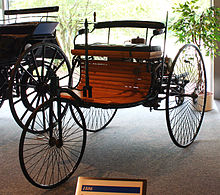


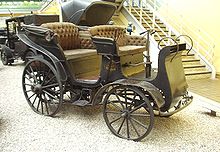

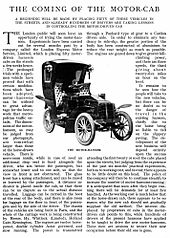



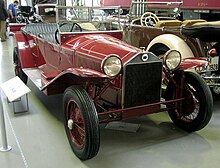




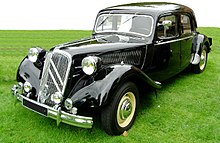
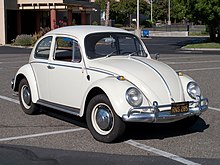

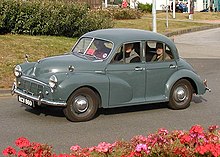










0 comments:
Post a Comment